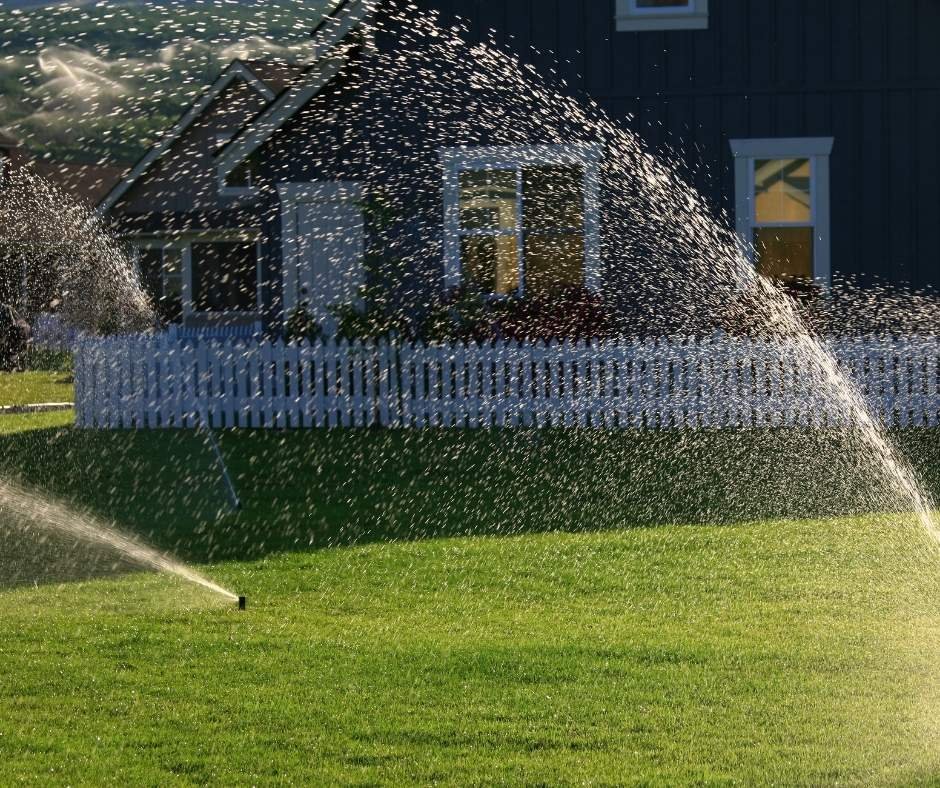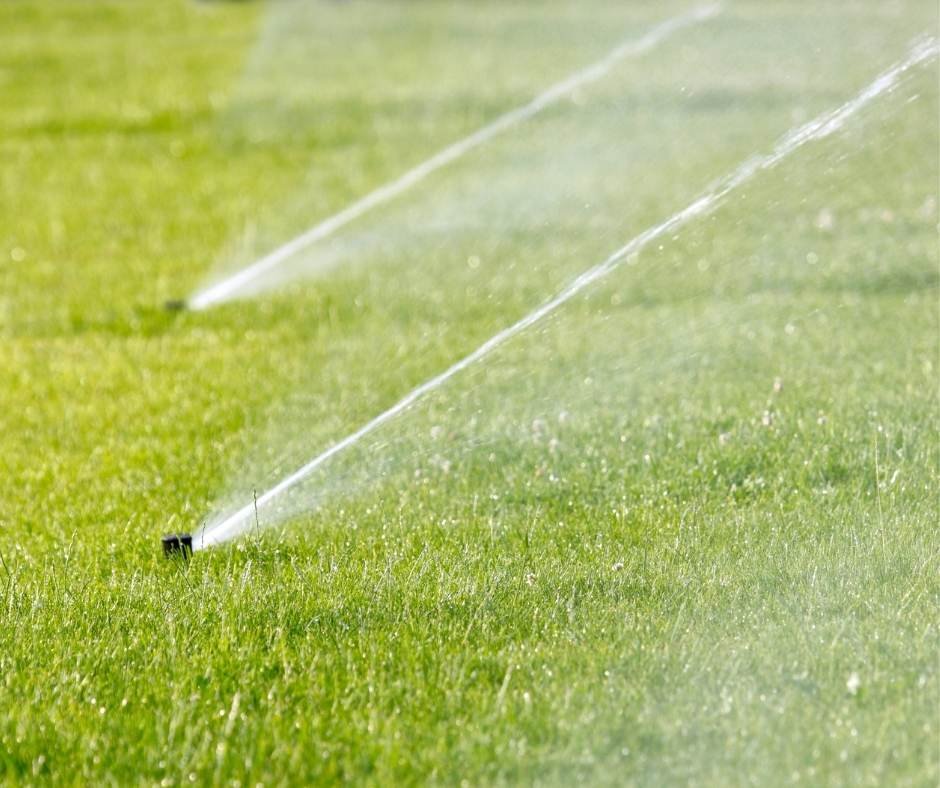How Many Sprinklers Per Zone? How to Avoid Sprinkler Overlap
Everyone likes a lush and green yard where the kids can play on the weekends. Unfortunately, keeping that lawn green can be expensive.
A yard measuring 100’ by 100’ can cost you as much as $156 per month just to water it.
Worse, roughly 50% of the water used outdoors is actually wasted. This waste can be caused by evaporation, wind, and runoff, with the overall amount totaling around 25,000 gallons per year. This is especially true when it comes to the improper installation of automatic landscape irrigation systems.
One way to solve this problem is by planning the layout of your sprinkler system carefully. Through careful installation, you can create an efficient setup that guarantees every inch is watered without expensive overlaps.
But how many sprinklers per zone do you need? Here’s what you should know:
Why Complete Irrigation Coverage Matters
Complete irrigation is crucial if you want to maintain a healthy patch of lawn grass. A healthy lawn should have a consistent deep-green color. The blades should be thick and grow straight upward from the ground. They should also be springy and bouncy, creating a ticklish feel on your feet if you walk barefoot. Healthy lawns do not have bald spots or a thin covering that lets you see the dirt underneath.
Simply put, a healthy lawn looks and feels gorgeous.
Proper irrigation plays a large part in creating a healthy lawn. Improper coverage will create bald spots, thin out the grass blades, and cause uneven growth. Worse, this can happen even if you’re generous with the sprinklers. Because of the improper coverage, you could be spending just as much on the water without getting the results you want.
The Different Types of Sprinkler Zones
Sprinkler zones refer to the area or space that each sprinkler manages to service with water. Ideally, each zone should have a dedicated watering source to guarantee constant hydration.
Determining these sprinkler zones depends on several factors, including the type of sprinkler head, the water pressure, the size of your lawn, the kind of soil you have, and even the plant types.
Here’s what you should know when creating sprinkler zones:
Plant Types
Start by figuring out the “zones” of your yard. Try to name specific areas depending on the plants located there or how the sun hits the area during the day. Shady areas, trees, and shrubs won’t need as much water. Ideally, each zone should have a single type of plant inside it. For example, you don’t want to have grass and shrubs in the same zone. These two plants will have different watering needs, and one or the other can die without proper planning.
Water Pressure
Find out your home’s water pressure. Most sprinkler systems are designed to work at 30 psi. If your water pressure is lower than this, you might not get good results.
Sprinkler Heads
Spray head sprinklers typically water 360 degrees of space, although you can make adjustments so they’ll only cover 90, 120, or 180 degrees. You can also use rotary head sprinklers, which can stream water over a great distance. They’re perfect for homes with large lawns or hilly yards. The large arc of the water helps prevent runoff from the sprinkler system.
Bubblers or drip irrigation is designed for small areas. They’re typically installed close to trees or shrubs as a dedicated source of water.
You can also use different types of sprinkler heads depending on the zone; for example, if one part of the yard contains trees, you can use a drip-type sprinkler head.
Dividing your Lawn
You can divide your lawn into zones by plotting out where each sprinkler head will go on a drawing. From here, you can create an imaginary spray of water covering each area. The goal is to make sure that each square space of your area gets water from the sprinkler head. Add and reduce sprinkler heads as needed. The goal is to cover all of the necessary areas while keeping sprinkler heads at a minimum. This is a trial and error stage that you can do on paper.
The shape of your lawn can also determine how you plot a zone. With rectangular lawns, you want to start by placing sprinkler heads along the perimeter. Place another head in the center, and then make calculations based on this basic layout. The same technique works for square-shaped lawns.
Irregular areas will need more planning. In these cases, sprinkler heads with adjustable coverage can help you plan within the irregular shape.
How Many Sprinklers Should You Have Per Zone?
The number of sprinkler heads you’ll want in each zone will vary depending on the water pressure and total volume per minute available. This is where you need to break out your calculators! Or, if you prefer, simply leave the irrigation design up to an installation professional, so you can be guaranteed head-to-head coverage.
Typically, though, a sprinkler system zone will boast 5 to 6 rotor heads and/or 8 to 10 spray heads.
Should Sprinklers Overlap?
Yes, sprinklers should overlap, but only up until the point where they’re reaching the next zone. This is called head-to-head coverage, and it’s what ensures your lawn receives plenty of water to keep it healthy and green.
Things to Consider When Adding a Zone to Existing Irrigation
Check out this great video of adding a sprinkler head to an existing zone, the DIY way!
If you already have an existing setup but you want to improve your irrigation system, there are several things to consider. Perhaps the most important aspect would be the legal or technical side; some local governments or HOAs require permits or applications when installing or adding an irrigation system.
Once you’ve secured a permit or determined that you don’t need one, you can start plotting where the next zone will go. Locate your controller and start digging a trench where the pipe for the new zone will go. Ideally, your controller should have an existing slot where the new valve will go. Without this, you might need to buy a new controller entirely.
Using straight lines, lay out the new pipe towards your intended zone. You can use 90-degree turns if a straight line is not possible. Connect the pipes until you reach your desired area.
However, this process can take hours, if not days, and this is especially true if you’re not sure how your irrigation system is set up. If you don’t have the right tools or access to the right materials, it’s best to seek professional help for adding additional zones.
Contact an Irrigation Installation Company Near You
We are an irrigation installation company with years of experience when it comes to plotting and placing sprinkler zones. As a local company, we have the necessary expertise in calculating and considering local factors when developing a brand new irrigation system for your home. Our goal is to help you keep a lush and beautifully maintained lawn while keeping water costs low through an effective irrigation system.
If you have any questions, feel free to call us today for a no-commitment consultation!



